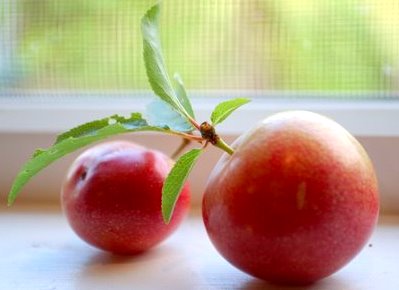
Plum allergy can range from mild to severe symptoms. It belongs to tree nut family and other fruits that have identical protein to plum can trigger allergic reaction.
Based on Asthma and Allergy Foundation of America, about 6 percent of allergy experiencing people have food allergy. Soy, milk, eggs, wheat, peanuts, tree nuts, fish and shellfish are common food allergens.
It is first originated in Asia and cultivating in China, USA and Serbia. Like other natural substances, plum or Aloo Bukhara are renowned to boost immune system, fight ageing, improves healthy functioning of liver and heart.
Besides being nutritious fruit, proteins in plum can be allergic to sensitive people. Your immune system wrongly determines plum proteins as a threat and produces antibodies to detect them. After a couple of consumption, antibodies signals to release histamine that results in allergic symptoms.
Main motive of your immune system is to thwart these foreign bodies out to save your body. Symptoms can be mild and in rare cases lead to life-threatening conditions.
Plum Allergy Symptoms
Signs of allergic reaction can be seen within 15 minutes of eating plum fruit. Local reactions like itching, inflammation in throat and tingling sensation around mouth can be seen.
Oral allergy syndrome or pollen associated food allergy includes swelling of lips, tongue, throat and itching around mouth.
Protein in birch pollen is identical to plum and people with birch pollen allergy may develop plum allergy. Other foods that can trigger the allergy include pears, apples, bananas, cherries, melons, hazelnuts and carrot. This is due to cross reaction between foods due to birch pollen.
Symptoms include:
- Hives
- Vomiting
- Abdominal pain
- Asthma
- Swelling of mouth and lips
- Difficulty in breathing
- Anaphylaxis
The reason why people who’ve seasonal allergy experience oral allergy syndrome is that proteins in raw fruits are identical to proteins in pollen. Due to cross reactivity, when people with seasonal allergy ingest raw fruits or vegetables, immune system identifies similarity between food and pollen’s proteins and trigger reaction.
Diagnosis and Prevention
According to Dr. Wayne Shreffler (Food Allergy Center at MassGeneral Hospital for Children, Boston), allergic reaction trigger within seconds or minutes after consuming the food.
As soon as you realize symptoms of allergy, consult allergist for diagnosis. He will conduct skin prick test to determine the specific allergen. Testing will be done using different substances.
Ask allergist for immediate precautions to be taken in severe conditions. Wear a bracelet that can alert people around you in life-threatening conditions.

